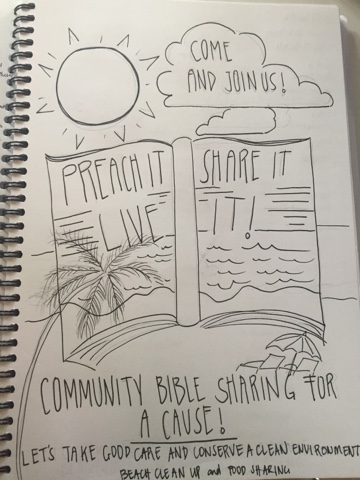Week7 HomeWork
Monday
Research: What are the topics central issues and themes
Shiuan Huang
- Simpsons exerciseNotes and research on topic
Rubbish free beaches, arrive and leave nature the way they should be.
When we leave litter lying around, it travels out to sea through drains, streams, lagoons, estuaries and rivers. Once in our oceans, rubbish harms and kills sea creatures, who get caught in it or mistake it for food. Toxins from plastics poison our seafood and rubbish on land makes a perfect home for mosquitos to breed and spread disease.
Use this page to learn more, then get involved in hands-on solutions to this problem.
If we all use fewer products that creat rubbish and dispose of what we use carefully, we can keep our beaches and oceans how they should be: litter free. For the rubbish that is already on our beaches the answer is simple: we can pick it up! Beach clean-ups are a great, fun activity to organize for your community.
Jack Johnson interview - Loveyourcoast
Explore Topic:
How human waste made a life are harmful to sea creatures.
treating ocean isn't just aout a clean-up, it is about the process and a way of life..
Homework:
Explore:
- Continue with the Simpsons exercise this time exploring your topic through 2 different characters viewpoints.
- Use this exercise to understand the topics and to choose the one that appeals most to you.
Understand that there are many audiences. These varied audiences will help you generate a wider range of viewpoints, design /rhetorical responses. - Make notes on the points of the topic(s) and the topic brief expectations and your audience responses.
- Make quick thumbnail concept visuals to get your character to engage with the event. Have fun, be wild, be fast and loose!
Shiuan Huang
Angelique Araiza
One of the characters we've chose to do was Ned Flanders character.
One of the characters we've chose to do was Ned Flanders character.
Brainstorming NED's character
Tuesday
Shiuan Huang
- Email with environmentalist: Statistic
Hi Claire,
Sounds like a very interesting paper. We have around about 20-30 people turn up each month, we have a lot of regulars that come most months, newbies that become regulars and a couple of people we never see again. Everyone that comes is shocked by the amount that accumulates on Evans bay beach and is one of the big reasons they keep coming back to help cause they want to see a difference and they realise the impact the rubbish can have on the ocean and ocean life.
We have been counting certain thing we are finding a lot of down at the beach - Straws, Lollipop sticks, Bottle lids and Parking tickets. Which has had more of an impact on people that see these photos on our Facebook page than just the black bags of rubbish. If you have a look at our Facebook albums on the Sea Shepherd New Zealand Facebook page there are the stats from each month.
--
Kind regards
Mandy Coleman
Wellington Co-ordinator
Sea Shepherd New Zealand
http://www.seashepherd.org/nz/
0212325776
--
Kind regards
Mandy Coleman
Wellington Co-ordinator
Sea Shepherd New Zealand
http://www.seashepherd.org/nz/
0212325776
From: Claire Huang <brodiehuang@gmail.com>
To: <mandy@seashepherd.org.nz>
Sent: 07/09/2015 1:18 PM
Subject: A uni design student with some environmental questions

To: <mandy@seashepherd.org.nz>
Sent: 07/09/2015 1:18 PM
Subject: A uni design student with some environmental questions
Hi Mandy,
I'm Claire Huang, a friend of Sarah Wang ("the one who's going to do the education stuff"), due to a Sea Shepherd beach clean-up event I've participated, I'm currently redesigning a beach clean-up event for my course paper and would like to get to now some more about our pollution side of the problem towards ocean. Would you be interested in sharing statistics such as; what makes people participate (or what kind of people are they)? what are the statistics you have come across (in relation to this topic)?Hope everything is going well so far,Kind RegardsClaire Huang
Water covers more than 70 percent of the planet's surface, making our rivers, lakes and oceans the lifeblood of our planet. Many of these bodies of water may be out of sight and out of mind, but our health may depend on their protection.
Currently, scientists believe the world's largest garbage dump isn't on land...it's in the Pacific Ocean. The Great Pacific Garbage Patch stretches from the coast of California to Japan, and it's estimated to be twice the size of Texas. "This is the most shocking thing I have seen," Oprah says.
In some places, the floating debris—estimated to be about 90 percent plastic—goes 90 feet deep. Elsewhere, there are six times more pieces of plastic than plankton, the main food source for many sea animals.
Where did this trash come from? Marine biologists estimate that about 80 percent of the litter is from land, either dumped directly into waterways or blown into rivers and streams from states as far away as Iowa.
Read more: http://www.oprah.com/world/Ocean-Pollution-Fabien-Cousteaus-Warning-to-the-World#ixzz3lJvphsZb
Read more: http://www.oprah.com/world/Ocean-Pollution-Fabien-Cousteaus-Warning-to-the-World#ixzz3lJvphsZb
- Project plan: Finalise from work begun in class.
example of art out of human waste
- Collect design stylistic and rhetorical precedents: that you find inspiring/appropriate.
Explore:
- Mood boards:
- Rhetorical thumbnails:
Juxtaposition
Substitution/addition
Pastiche
























No comments:
Post a Comment